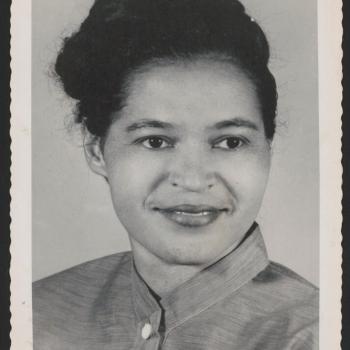
Rosa Parks (1913–2005) is best known for her refusal to give up her seat to a white man on a crowded bus in Montgomery, Alabama, on December 1, 1955. Her arrest sparked the Montgomery Bus Boycott, a pivotal event in the civil rights movement that ultimately led to the dismantling of Jim Crow segregation. Rosa Parks became an icon of the movement, celebrated for this single courageous act of civil disobedience, but she is often characterized by misconceptions. Contrary to popular belief, Parks was not a demure seamstress who chose not to stand because she was physically tired. Her calm demeanor hid a militant spirit forged over decades. Learn more about her and her life by exploring these primary sources.
Explore the sites and online exhibitions listed below. Ask students what they can learn from these primary sources about why Rosa Parks took her stand against segregation, and about the organizations and movements that participated in the struggle. They might compare that to what they learn from a textbook or other secondary source and then write a possible update for the secondary source.
It's important that students understand the difference between primary and secondary sources. Visit here for a solid definition and see some examples.
Rosa Parks: In Her Own Words showcases rarely seen materials that offer an intimate view of Rosa Parks and documents her life and activism—creating a rich opportunity for viewers to discover new dimensions to their understanding of this seminal figure.
This gallery showcases a selection of items from the Rosa Parks Papers at the Library of Congress, a gift from the Howard G. Buffett Foundation. This collection contains thousands of items that document the life, work, and legacy of this civil-rights legend.
In honor of the birthday of civil rights legend Rosa Parks, this blog highlights the many cards and letters students wrote for Ms. Parks over the years.
The Rosa Parks Collection, which is on loan to the Library for 10 years from the Howard G. Buffett Foundation, spans from 1866-2006 and contains 7,500 items and 2,500 photographs.

Join NEA’s Read Across America to celebrate a nation of diverse readers with these recommended books, authors, and teaching resources that represent an array of experiences and cultures.
Read Across America has celebrated books and reading since 1998. This year, there are even more opportunities:
• Encourage adults to spend more time reading to children
• Share stories that raise up the many voices that need to be amplified and heard
• Use books to help students discover their own voices and learn from the voices of others
• Encourage readers to believe in themselves and use their voices and stories for positive change
Use the Read Across America Day calendar, Build Your Stack® posts, and ReadWriteThink.org resources to support these efforts.
Join NEA to celebrate a nation of diverse readers with these recommended books, authors, and teaching resources that represent an array of experiences and cultures.
NEA is excited to bring Read Across America year-round to help motivate kids to read, bring the joys of reading to students of all ages, and make all children feel valued and welcome.
Review the recommended titles in this calendar and the Read Across America poster.
This NCTE initiative is focused exclusively on helping teachers build their book knowledge and their classroom libraries.
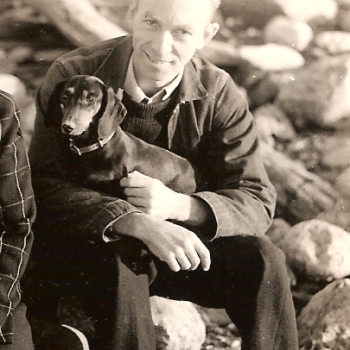
After spending many years writing for The New Yorker, E.B. White turned his hand to fiction when his first children's book, Stuart Little, was published in 1945. White's most famous children's book, Charlotte's Web, followed in 1952. Both went on to receive high acclaim and in 1970 jointly won the Laura Ingalls Wilder Medal, a major prize in the field of children's literature. That same year, White published his third children's novel, The Trumpet of the Swan. In 1973, that book received the William Allen White Award from Kansas and the Sequoyah Award from Oklahoma, both of which were awarded by students voting for their favorite book of the year.
In honor of White’s love for children’s books about animals, have a class discussion about the ways that animals are portrayed in different fictional novels (both those by White and others). Have students do one or more of the following activities to further examine farms and farm animals, such as those in Charlotte’s Web:
- Take a class field trip to a local farm. Have students take pictures and write down the sights and sounds of the farm. After returning to the classroom, have students compile a class scrapbook that highlights the different animals at the farms and the most important things learned on the field trip.
- Students can create Acrostic Poems about a farm animal of their choice, share their poems with the class, and then create a classroom bulletin board showcasing all of the students’ favorite farm animals and information about each one.
- Have students create a Venn Diagram comparing and contrasting the farm with the city, farm life with city life, or two different farm animals. This activity can also be followed up by writing a Compare and Contrast Essay as a part of a longer activity.
- Compare the book version of Charlotte’s Web to the movie version. Then, use the Compare and Contrast Map or Venn Diagram to discuss the similarities and differences between the two.
This site includes stories about E.B. White's life and Charlotte's Web, Stuart Little, The Elements of Style, and Trumpet of the Swan.
Read about E.B. White, author of the cherished children's classic Charlotte's Web, Stuart Little, and The Trumpet of the Swan.
Find out information about E.B. White, Charlotte’s Web, and take part in some “fun and games” related to the book and movie.

Born in the Hill District of Pittsburgh, Pennsylvania, August Wilson went on to become one the most significant American playwrights of the 20th Century. The only African American at his high school, Wilson was eventually driven out by threats; his family suffered the same fate when they moved out of the Hill District to a white working-class neighborhood in Pittsburgh.
Wilson was the cofounder of the Black Horizon Theater Company in Pittsburgh. He is most famous for his collection of ten plays-the Pittsburgh Cycle-that, decade by decade, chronicle a portrait of African American experience in the 1900s. Two of those plays, Fences and The Piano Lesson, earned him Pulitzer Prizes in Drama. Wilson died in 2005 and is currently the only African American to have a Broadway theater named after him.
Taking inspiration from August Wilson's epic cycle of ten plays, each set in a different era and together representing a broad portrait of life in a particular community, work with a school or local librarian to gather a number of print and digital resources about the history of your community. Challenge students to find an event or theme that can serve as the focal point for a story set in each decade. Have the class work together to use the Timeline Tool to create a decade-by-decade record of the community's history. Then, have small groups choose one of the events/decades to develop into a play using the Drama Map as a guide.
This site is the online home for this not-for-profit organization that presents performing, visual, and education programs that celebrate the contributions of African Americans and the impact of cultural expression from Africa to the African Diaspora.
The work of Kutztown (Pennsylvania) University assistant professor Mike Downing, this site is an archive of information relating to the life and works of August Wilson.
This site offers a biography of August Wilson, plus links to all of his works currently in print.

Tim O'Brien, author of the memoir If I Die in a Combat Zone, Box Me Up and Send Me Home and short story collections and novels such as Going After Cacciato (for which he won the National Book Award) and The Things They Carried, is known as America's preeminent writer of the Vietnam War era. A veteran of the conflict, O'Brien writes about the experience of the Vietnam War and Vietnam Era with both specific realism and artful imagination. After his tour of duty in Vietnam, he enrolled at Harvard for graduate work but left to pursue an internship at The Washington Post.
Students who read Tim O’Brien’s stories, particularly The Things They Carried, are intrigued by his flexible literary concept of “truth.” He suggests that the truth of fiction, as revealed by a story, can be more true than what actually happened. After reading O’Brien’s story “A True War Story” from The Things They Carried, have students choose a powerful event from their own lives. Using the Timeline Tool, have them map out the events from real life. Then, with the emotional impact of the full story in mind, encourage them to create a fictional version that remains true to the facts of real life but moves toward O’Brien’s notion of the “story truth.”
This site offers a collection of research links about Tim O’Brien for students and a list of his works and related resources.
In this 2010 interview, Tim O’Brien discusses a number of topics related to his work and their relevance today.
Here you’ll find an audio archive and transcript of O’Brien’s talk on the challenges of writing.
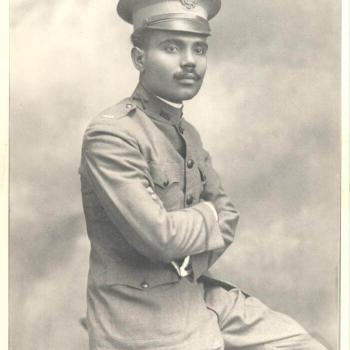
Prominent political and social activist was born in Ponce, Puerto Rico on June 29, 1893 or September 12, 1891. After being educated at the University of Vermont and Harvard University and serving in the US military in World War 1, Albizu Campos became interested in the Puerto Rican independence movement, serving as the president of the Nationalist Party from 1930 until his death in 1965.
Among his accomplishments are improved labor conditions in Puerto Rico (Albizu Campos led strikes against the Puerto Rico Railway and Light and Power Company and the US sugar industry) and bringing attention to the problematic colonial relationship between the US and Puerto Rico. His theory of non-collaboration with colonial structures (such as boycotting elections and military service) made him a controversial figure in the US. He was jailed twice and was under FBI surveillance for much of his life.
Called “El Maestro” or “The Teacher” for his powerful speaking ability, Albizu Campos is the namesake of several schools in Puerto Rico, Harlem, and Chicago.
Using background information on Pedro Albizu Campos as an example, invite students to investigate the complicated histories of figures from throughout the world associated with nationalist movement. These movements, often related to histories of colonization, assert the interests of one's own nation as separate from the interests of other nations or the larger interests of all nations. Prominent nationalist figures include
Pedro Albizu Campos (Puerto Rico)
Simón Bolívar (South America)
Miguel Hidalgo (Mexico)
Ho Chi Minh (Vietnam)
Nelson Mandela (South Africa)
Mohandas Karamchand Gandhi (India)
Michael Collins (Ireland)
Let students or groups of students choose a figure from this list, or another nationalist figure of their choice. Students can conduct research through print and Internet sources and share their findings with their peers using the Bio-Cube student interactive.
This biography provides additional information about the life and accomplishments of Pedro Albizu Campos.
This entry from Stanford University provides background information on nationalism, including links to other resources.

The first recipient of the Rosa L. Parks Woman of Courage Award and a Langston Hughes Medal winner for her poetry, Nikki Giovanni prides herself on being "a Black American, a daughter, a mother, and a professor of English." She was born in Knoxville, Tennessee, in 1943, and is the author of over 30 books for both adults and children, as well as a University Distinguished Professor at Virginia Tech.
Using Nikki Giovanni's poem "My First Memory (of Librarians)" as a model, encourage students to connect memory, their senses, and the language of poetry.
Write on the board or display on an overhead projector the prompt "My First Memory (of ... )" and ask students to think of a person, place, thing, or experience for which they can recall specific early memories. Ask them to brainstorm any sensory images: sights, sounds, smells, tastes, and tactile images.
Then share "My First Memory (of Librarians)," encouraging students to take inspiration from Giovanni's structure and use of language as she reveals her feelings and attitudes toward her subject.
Featuring a wealth of resources, Nikki Giovanni's official site offers biographical information, links to essays and conversations, and multimedia content.
Nikki Giovanni's page on the Academy of American poets features biographical information and the text of some of her poems.
The Poetry Foundation page for Nikki Giovanni provides information on her life, career, and bibliography, as well as the text of several of her well-known poems.
This talk was given by Nikki Giovanni at a TEDx event.
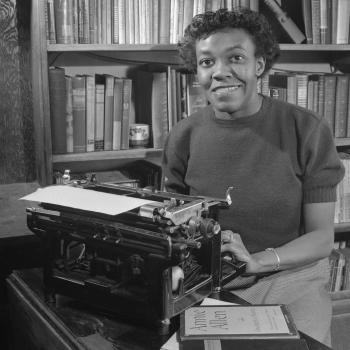
Best known for poems such as "The Mother," "The Bean Eaters," and "We Real Cool," Gwendolyn Brooks published Bronzeville Boys and Girls in 1956. Brooks dedicated the collection of 34 poems to her two children, Henry and Nora, who grew up in the same neighborhood on Chicago's South Side as the children in the book. A new edition of Bronzeville Boys and Girls features illustrations by Faith Ringgold.
Bronzeville Boys and Girls is a collection of poems that celebrates the joy and imagination of a community of children. Obtain a copy of the book and share several poems and illustrations with your students. Point out that some of the poems focus on a single child ("Narcissa," "DeKoven"); some on pairs of children ("Timmy and Tawanda"); and still others on children in specific situations ("Rudolph is Tired of the City," "Mirthine at the Party").
After students have read and discussed several poems from the collection, ask them to create a poetry anthology for their own family, neighborhood, or classroom. Students can use the Stapleless Book to create a collection themselves, or they can each contribute one poem to a class collection. Be sure to have students include illustrations to accompany the poems they compose.
This Academy of American Poets biography of Brooks includes links to five of her poems and an audio file of Brooks reading her famous "We Real Cool."
This site is a collection of web resources related to Brooks, who was the 29th Consultant in Poetry to the Library of Congress. Resources include links to interviews, audio files, criticism, and lesson plans.
On her official site you can find more work by and information about Faith Ringgold, the illustrator of the new edition of Bronzeville Boys and Girls.
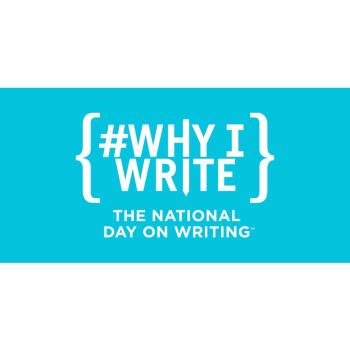
To draw attention to the remarkable variety of writing Americans engage in and to help make writers from all walks of life aware of their craft, the National Council of Teachers of English has established October 20 as the National Day on Writing®. It's important for everyone to share their knowledge about writing, organize participating groups in our schools and/or communities, and transform the public's understanding of writing and the role it plays in society today.
Encourage your students to uncover all of the different kinds of writing they do on a daily basis by asking them to keep a list of everything they write, from text messages to school assignments, e-mails to diary entries, in a single day.
After students make a list of everything they wrote in a day, help them see the variety in their writing, both individually and as a class. Post colorful chart paper with age-appropriate questions about purpose, audience, genre or type, and technology around the room. Ask students to brainstorm different categories for each poster based on the writing they did. Write these categories on the posters and then have students contribute examples from their personal lists. Facilitate a gallery walk of the posters once students have contributed to all of them.
Encourage students to view and reflect on all kinds of writing - no matter the purpose, audience, type, or technology.
Here you will find information about the National Day on Writing® initiative, as well as links to a variety of NCTE writing resources and tips for writing.
Keep these tips from NCTE in mind as you think about your writing.
This collection of position statements includes the "NCTE Beliefs about the Teaching of Writing" and "Writing Now: A Policy Research Brief."
This is the online home of the NWP, a professional development network with the mission of improving student achievement by improving the teaching of writing and improving learning in the nation's schools.
The Learning Network provides teaching and learning materials and ideas based on New York Times content.

Americans made history in 2008 by electing Barack Obama as the nation's first African-American President. In addition to his work as a community organizer and Senator, Obama also wrote two books, Dreams from My Father and The Audacity of Hope, before being elected President of the United States.
In his memoir Dreams from My Father, Obama describes an incident in which he, as a young boy, "came across the picture in Life magazine of the black man who had tried to peel off his skin" (51). Seeing the devastating effect negative messages about being African-American had on this man, Obama "began to notice that [Bill] Cosby never got the girl on I Spy, that the black man on Mission Impossible spent all his time underground. [He] noticed that there was nobody like [him] in the Sears, Roebuck Christmas catalog ... and that Santa was a white man" (52).
Share this passage expressing Obama's experiences with media messages and his understanding of his identity. Then encourage students to engage in an examination of the ways they are portrayed in the media. Point them toward print, online, and television portrayals of people who share their age bracket, race, gender, and any other relevant aspects of their identity.
Adapt activities from the lesson plans below to supplement their research and organize their findings.
Information and resources from the National Association for Media Literacy Education.
These resources promote media literacy education as a framework for accessing, analyzing, evaluating, creating, and participating with media content. Visitors will find readings, lesson plans, and samples of student-produced media.
This online article presents a summary of recommendations from a study that links young people's understanding of their identity to ways they are portrayed in the media. Included is a link to the full research report.
Nationally recognized as a leader in media literacy education, the Media Literacy Project provides resources that promote critical thinking and activism to build healthy and just communities. In addition to teaching and learning resources, visitors will also find information about media-based contests for students.